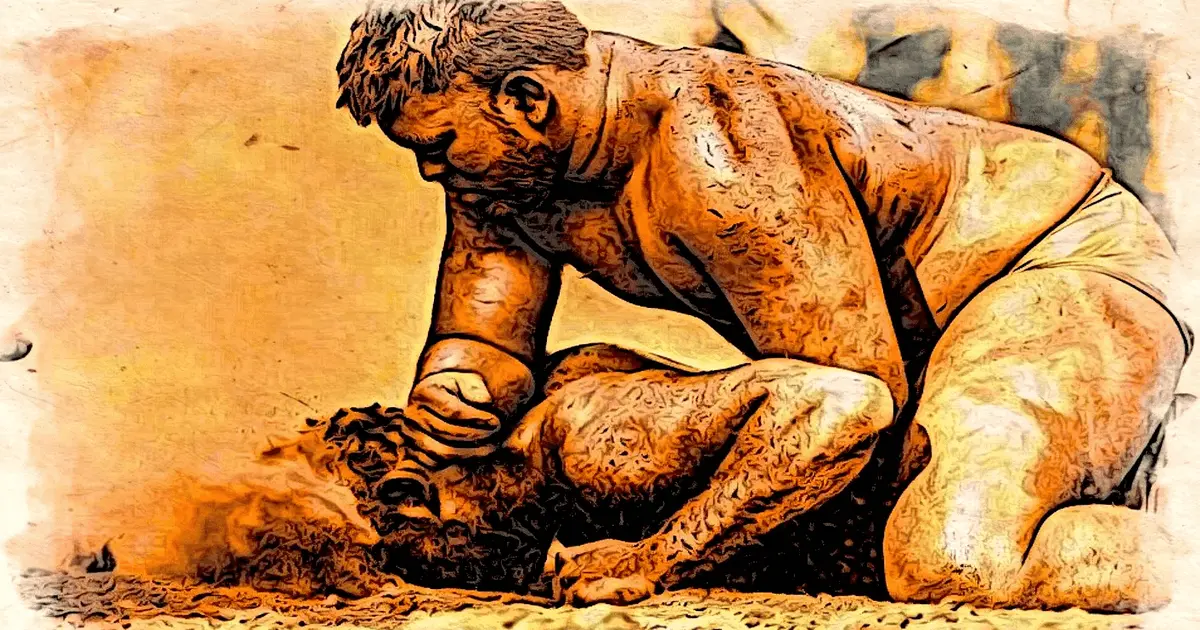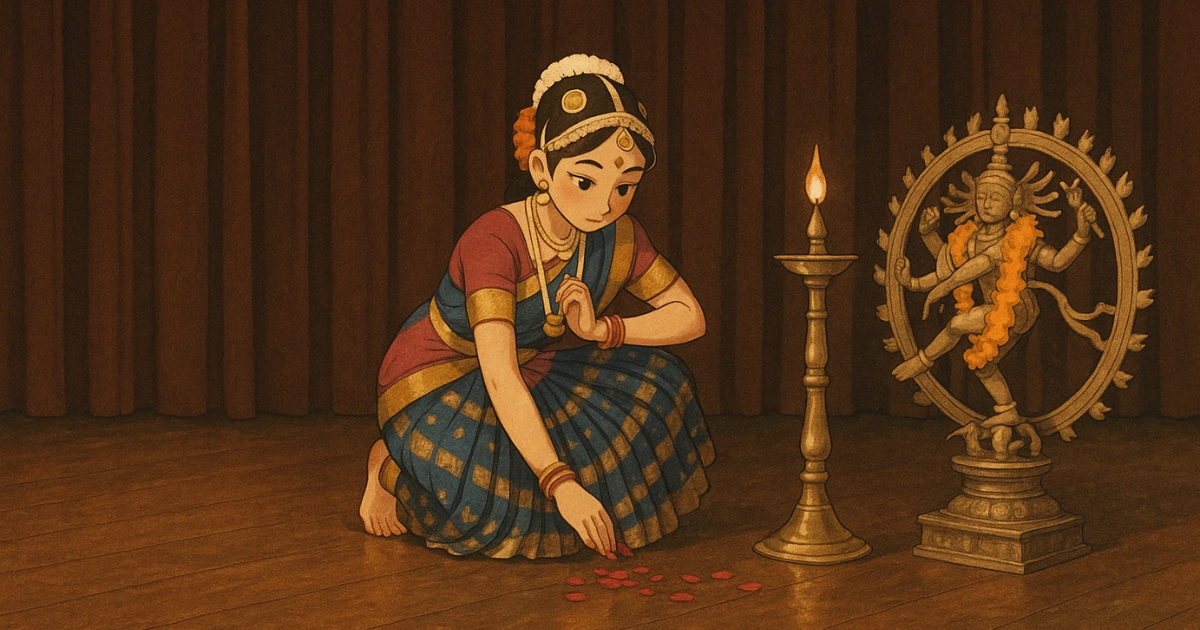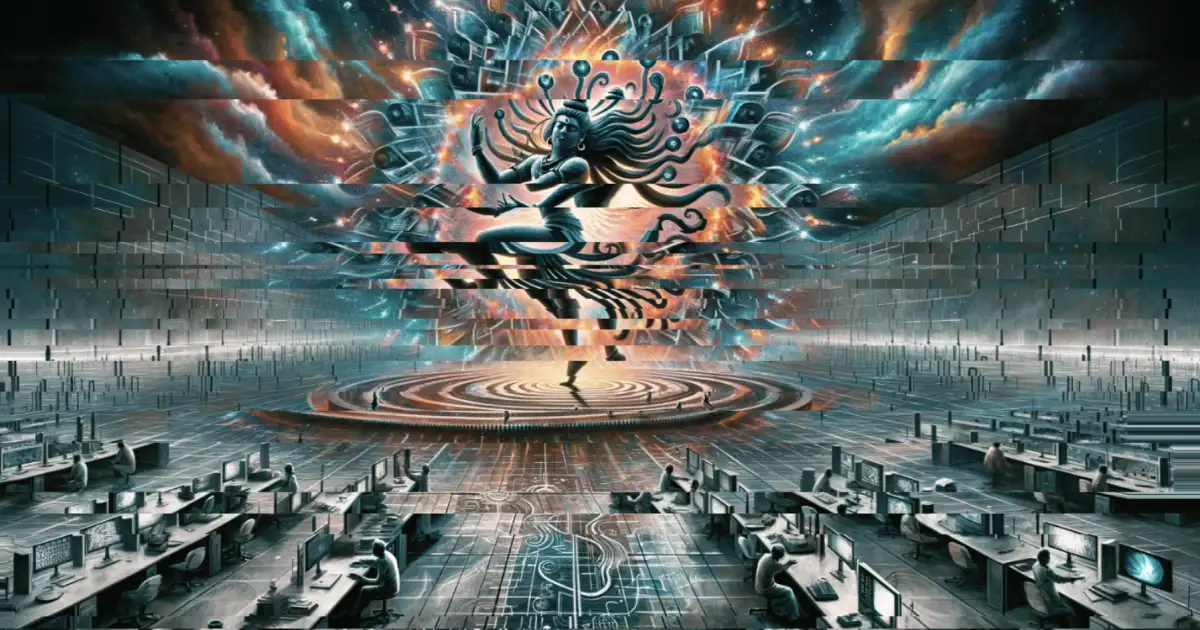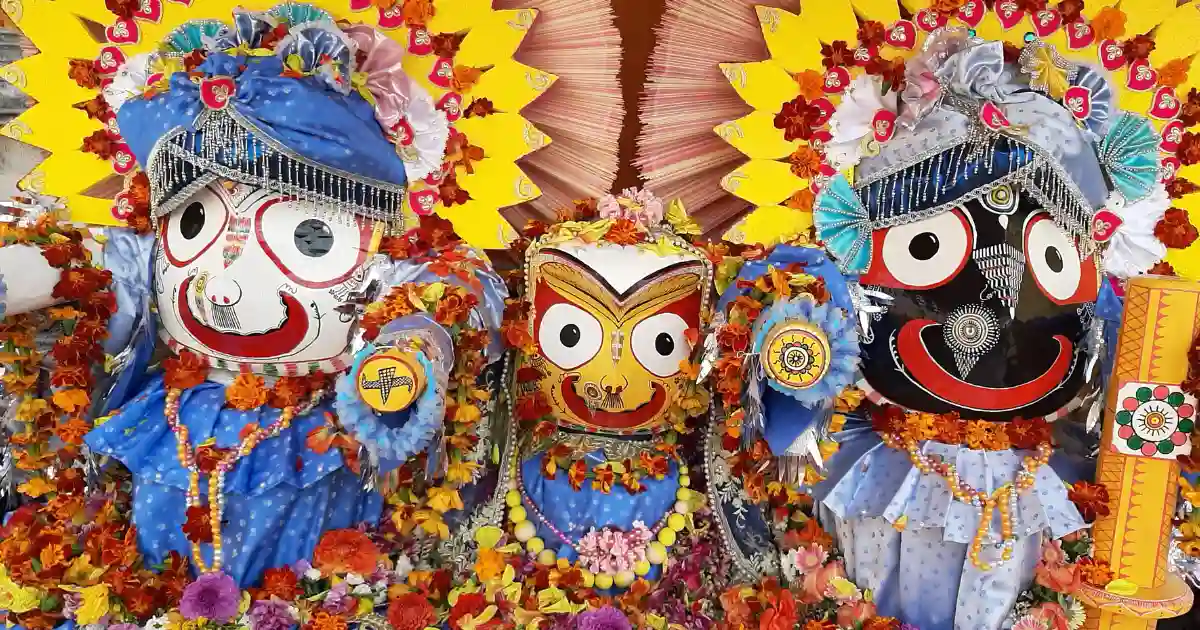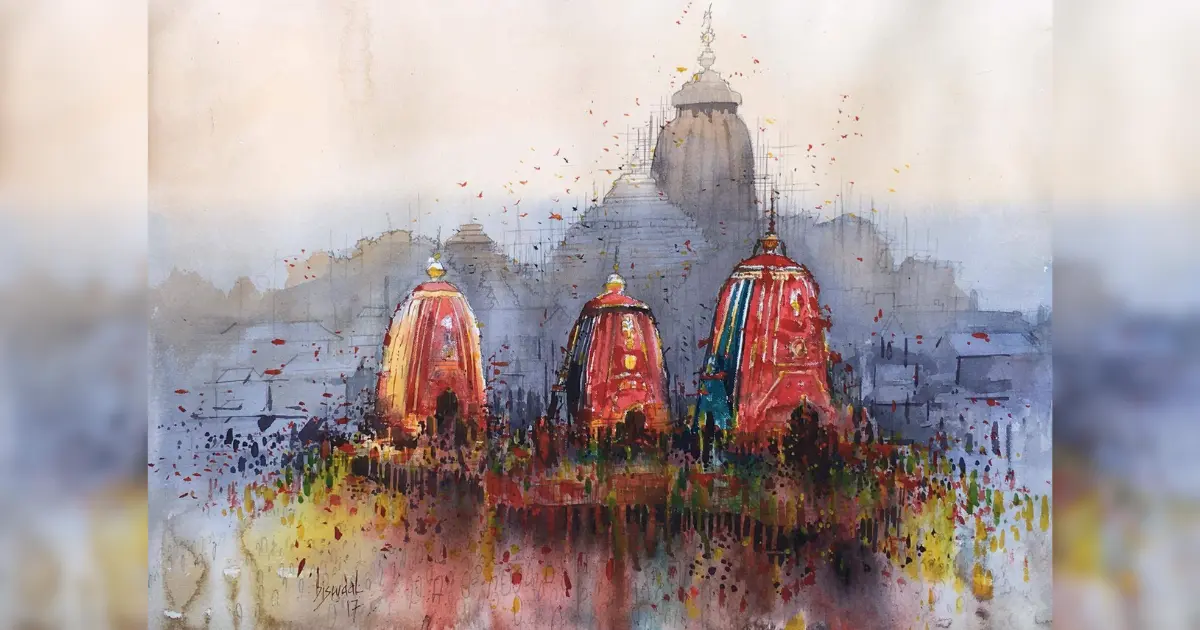जय बजरंग बली
In Hindu worldview, the body and mind are instruments which can aid one to attain to higher states of existence. Trained correctly, these can enable the individual to reach the peak of mental and physical vigor. While practices such as dhāraṇa and dhyāna bring the mind to focus, there are myriad physical practices to train the body for strength and durability. One such prominent practice is the art of malla yuddha which is practiced in an akhāḍā.
Malla krīḍā (wrestling sport) or Malla Yuddha (wrestling combat) can be said to be amongst the most ancient sports and combat techniques in the world. It is estimated to have originated in its rudimentary form in the stone age, when man needed enormous physical strength and the ability to grapple, wrestle and pin. The earliest references to it can be found in the texts of Mahābhārata and Rāmāyaṇa, where formidable warriors such as Bheema, Duryodhana, Balarama and Keechaka were said to have been experts of this sport1.
The ability of the tradition to continue unbroken for thousands of years and remain largely unchanged is chiefly due to the spiritual core of the practice. According to Swami Vivekananda, the 3 main components of any religion are its philosophy, mythology and ritual2. In the case of Malla krīḍā, it embodies the ritual aspect of dharma through its setting, elements and practices.
In any endeavor of spiritual import in the Hindu tradition, setting is of utmost importance. Just as a distinct space is dedicated to the Gods in any Hindu household, where the mundane must give way to the sacred, similarly the training of the body is undertaken in a sacred space i.e the akhāḍā. While some practices may be modified as per the deṣa, kāla and patra, the broad principles must remain the same.
The akhāḍā, where malla krīḍā is traditionally practiced, is the centerpiece and sacred space of this activity. While the occurrence of akhāḍās in Bhārata has diminished due to multiple factors ranging from invasions to modernity, akhāḍās all throughout India follow a largely common template. While there are some similarities with the freestyle Greco-Roman wrestling, the akhāḍā culture is much more dhārmika and intimate to the overall lifestyle of the mallas.
The kṣetra devatā of the akhāḍā is Śrī Hanumān, who is the epitome of strength, courage and selfless surrender - values which are the foundation of the akhāḍā tradition. Therefore, any activity that is performed within the precincts of the akhāḍā must be done after paying one’s respects to him, irrespective of one’s religion. The śānti mantra is also recited in his name before beginning, to prevent injuries which are common for a sport with this degree of physical exertion.
Compared to the secularly oriented body-building and wrestling cultures, the malla is chiefly concerned with such complex questions as the relationship between moral and physical strength, abstinence and celibacy. As such, wrestlers are concerned with wrestling as a way of life that defines the boundaries of their everyday actions3.
The aim is transformation, therefore each of the elements within the akhāḍā are specifically imbued with a degree of sacred. Various texts such as the malla purāṇa and Mānasollāsa of the Chalukya king Someśvara III list out the details of the sport, ranging from the dimensions of pit, composition of soil to the classification of the mallas, their diet and lifestyle.
The earth of the pit is the nexus of the akhara complex as a whole: it is the distillate of the compound’s physical elements and of its cultural meaning as well. The earth is the essence of strength3.
Many modern wrestling tournaments make use of mats as base, but that disregards the virtue of soil in the sport. The soil of the akhāḍā is not just a coolant and grip generator. It is also generally mixed with items such as turmeric, ghee, fragrances etc. to enhance its healing and reinvigorating properties. It even has the psychological impact of bonding the wrestler to the earth, a rarity in today’s world of wreckless abuse of the elements.
Furthermore, the akhāḍā functions through the guru śiṣya paramparā, where the śiṣya entrusts himself completely to his guru and elders. A disciple’s role is not to think, but to be molded and shaped, to allow himself to be cut in the pattern of perfection.
In many ways, malla krīḍā is a complete manual for well being in itself. It not only comprises various physical exercises for optimal body performance, but also incorporates elements from āyurveda for peak human health. From waking up during the brahma muhurta to consuming food of sāttvika nature, it effects change in the constitution of the malla to build a discipline which outlasts the training.
Comprehensiveness is the key, and any aspect taken in isolation from its original setting results in decay and loss of reputation for said practice. We see this time and again, but in recent times it has appeared most prominently in the case of yoga.
Yoga is the method of yoking the self to the universal consciousness, thus transcending the reality made apparent by the panca bhūtas. It may be considered the greatest gift known to mankind, and is most definitely the foundation of the Bhāratiya civilization. Presently, through appropriation and digestion by the West, it has been depicted in popular imagination to be only a set of postures (insultingly renamed āsanās), which produce some physical benefits. Moreover, spurious innovations such as Beer Yoga, Christian Yoga and the like have served to tarnish the reputation of this revered practice and cut it off from its Hindu roots.
Clearly, a practice thus divorced from its origins has the tendency to turn into a fad. Fads have a short shelf life, unlike traditions which last for millenia. However, when fads become more popular than the original, due to lack of awareness and investment in the original, then they have a very real chance of uprooting or severely discrediting the original. When the fads pass, people are left with the impression that the original activity itself was not worthy of continuation, and thus tradition runs a very real risk of loss between one or two generations.
The Hindu society survives on the principles of continuity, put in practice through the concept of Panca Ṛṇa. Discontinuity through disregard is an affront to all our ancestors who endured untold sufferings to keep the lamp of traditions alight. Many complaints on our inability to perpetuate tradition can be attributed to our economic weakness as a society, as artha is required to uphold dharma. However, there is also a creeping sense of alienation due to secular education. This enables the inimical forces to also appropriate our knowledge system and claim it as their own intellectual property.
There are instances of digestion of the akhāḍā tradition into the Islamic fold, minus the Hindu motifs, in the larger Indian subcontinent. However even in these cases, there is still a large degree of similarity due to the practitioners of the paramparā being the descendants of Hindus. In the non-Indo context, the akhāḍā culture is gaining prominence with the saturation of the gym-based fitness market, and many people are entering its practice due to its ‘exoticness’.
The recent entry of many non-Indian fitness enthusiasts into the akhāḍā culture has raised similar questions regarding the fate of this tradition. In the absence of formal organizational structures, insufficient documentation and non-practice, this tradition is in danger of being digested into the modern fitness milieu and changed beyond recognition. The impact of people appropriating parts of it and marketing it as their own intellectual property must also be investigated urgently.
Modern global narratives project Bhārata in all the wrong lights, with an active agenda to eradicate Hinduism from the face of the earth. The delinking of Yoga from its Hindu roots is one such expression of this narrative war. Therefore, the need of the hour is to highlight Bhārata as a land of origin and development in the world. With the current thrust on mainstreaming indigenous traditions of sports and wellbeing sciences, malla krīḍā must also be recognized and given due importance. The comprehensive approach of this art must be studied, preserved, and expanded upon; and the sport can even be certified. The larger question of how to formalize without disrupting the guru-śiṣya nature of the tradition or its religious aspects must also be addressed. Nevertheless, the potency of akhāḍā as a holistic sport and dhārmika combat technique can be amplified.
References:
Krishnappa, MK. Krishnaswamy, PC. Mallayudhdha: The traditional Indian martial art. International Journal of Yogic, Human Movement and Sports Sciences 2018; 3(2): 303-304
VivekaVani. (2011, August 16). The Methods and Purpose of Religion - Swami Vivekananda - VivekaVani. VivekaVani. https://vivekavani.com/methods-purpose-religion-swami-vivekananda/
The Wrestler’s Body. (2023). Cdlib.org. https://publishing.cdlib.org/ucpressebooks/view?docId=ft6n39p104&chunk.id=s1.1.8&toc.depth=1&toc.id=ch01&brand=ucpress
